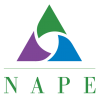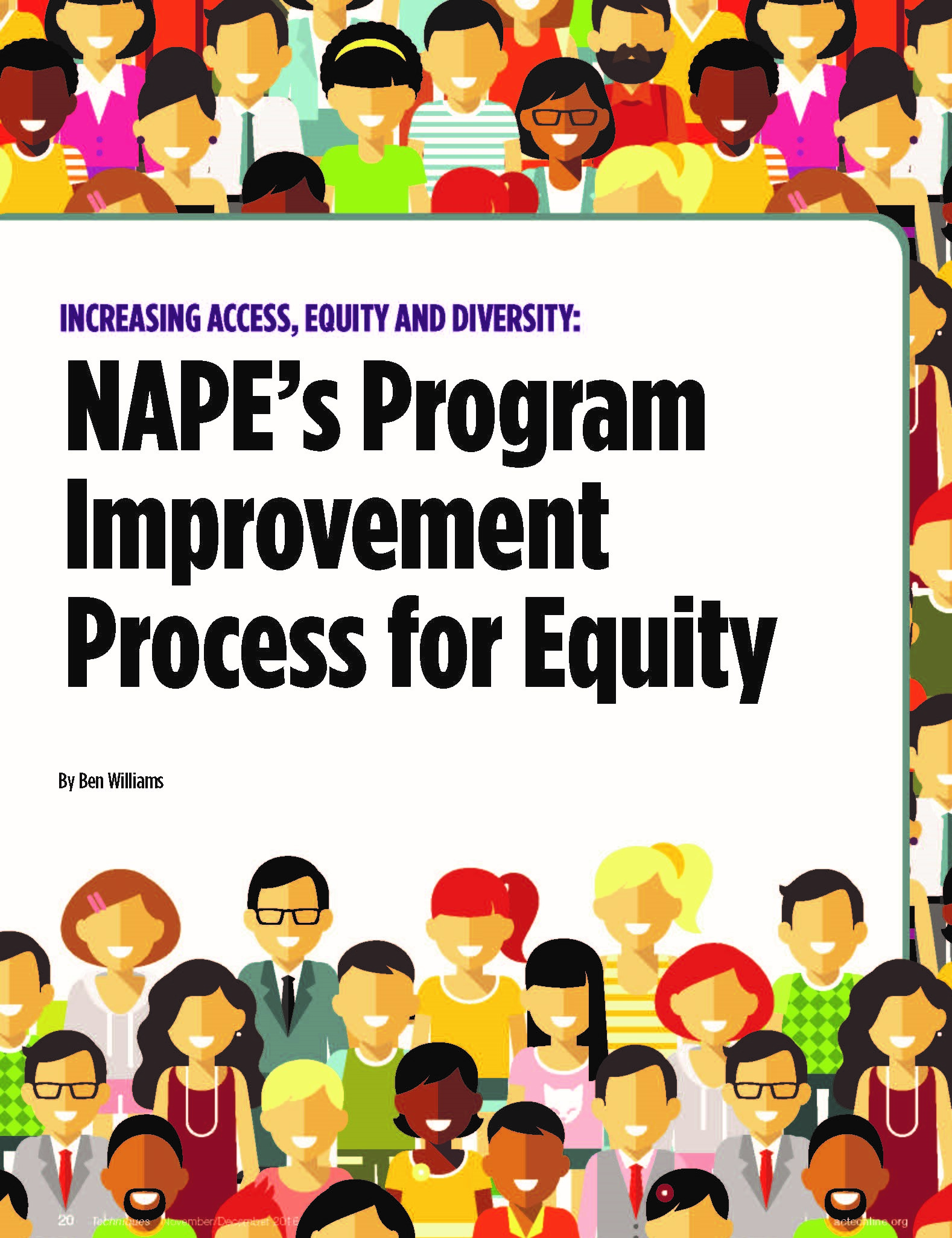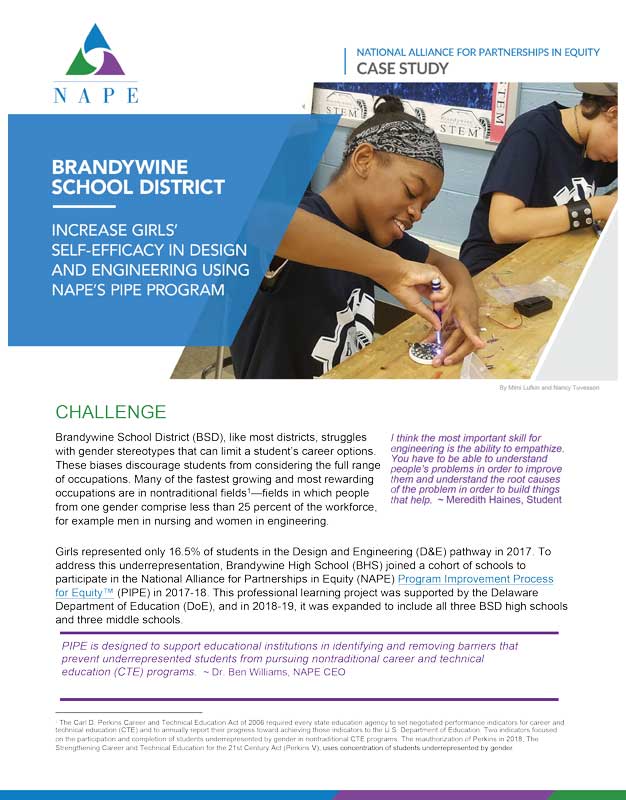NAPE understands that engaging leadership is essential for successful and lasting INSTITUTIONAL change. NAPE and its partners use a five-step Program Improvement Process for Equity™ (PIPE; formerly the Five-Step Improvement Process) that is based on practical yet rigorous methods and tools to guide state and local efforts to improve access, equity, and diversity in nontraditional occupations and STEM fields.
Through a 5-step process—Organize, Explore, Discover, Select, and Act—PIPE engages teams of administrators, teachers, and counselors in conducting a student data–based performance gap analysis, identifying root causes for the gaps, and developing an action plan based on research-based strategies proven to close the identified gaps.
PIPE-STEM™
When implemented with the specific objective of increasing the access and success of underrepresented groups in STEM, such as in the STEM Equity Pipeline, PIPE is referred to as PIPE-STEM. In interviews conducted by independent evaluators, PIPE-STEM site participants identified five significant benefits:
- understanding and using data;
- increased awareness of and commitment to STEM equity issues;
- new partnerships created;
- increase in female and other underrepresented groups participation and retention in STEM-related programs of study; and
- project sustainability and expansion.
Oregon PIPE 2015-Present
From 2015 to the Present, three cohorts of secondary, postsecondary, and STEM Hub partners have participated in PIPE in order to identify equity gaps (disproportionality) in CTE and STEM, and identify evidence- and research-based strategies to close those gaps. This Promising Practices handout outlines the lessons learned, key steps for success, suggestions to avoid pitfalls, and helpful reminders for continuous improvement. Root causes are aligned with strategies that have been effective in increasing participation, retention and/or completion in nontraditional (by gender) and other CTE and STEM programs of study. Under each module are themes that were identified through surveys and follow-up interviews, along with specific examples from institutions and regional teams. This material summarizes key outcomes that were highlighted in the Oregon PIPE Showcase on July 31, 2018. In FY2019, Oregon will partner with NAPE to offer its fourth cohort of PIPE training!
Additionally, site participants have reported an increase in female participation rates. Other notable results from past PIPE implementations include:
- increases of females enrolled in Project Lead The Way from 8 to 30 girls at one site, and from 0 to 11 out of 46 senior students (23.9%) and from 0 to 10 out of 30 (33.3%) junior students at another site;
- increase in girls participating in a STEM summer camp from 3 to more than 20;
- increase in females participating in auto technology from 7 (12%) to 21 (36%);
- increase in women in electronics and telecommunications from 12 (7%) to 21 (12%); and
- increase of senior girls in advanced level math from 15% to 55% in 2 years.
At the 2013 Data Quality Institute, hosted by the U.S. Department of Education, Office of Vocational and Adult Education, NAPE CEO Mimi Lufkin and Krishnan Sudharsan from Michigan Department of Education introduced Data Dashboards. Borrowing from the world of business intelligence, NAPE developed these dashboards to assist state and local education agencies in making their data understandable, meaningful, and actionable. Also visit the Data Quality Institute webpage for more information.
Learn more about PIPE-STEM.
PIPE Training Resources are available to NAPE members.
NAPE’s professional development solutions are designed to assist teams of educators to address specific needs related to: equitable learning environments, student academic success and ultimately, readiness to pursue high-wage, high-skill, high-demand careers.


